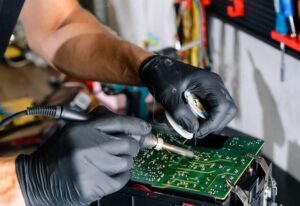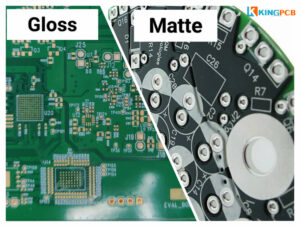Choosing Matte Finish or Glossy Finish for PCB Design?
2022-11-16Solder resist is a factor you must consider when it comes to creating a circuit board. You may be wondering whether to choose a matte finish or a glossy finish. In most cases, people ordering PCBs will leave the decision up to the PCB manufacturer, who usually defaults to a glossy finish.
What is a glossy finish for PCBs?
A PCB glossy finish is a reflective solder resist layer that is lighter in color than a matte finish and has a non-porous appearance.
What is a matte finish for PCBs?
As the name implies, the matte finish PCB surface is not glossy, looks darker than the glossy finish, and has a soft, porous appearance.
Functionally, glossy PCBs and matte PCBs have the same characteristics, and the difference between the two finishes is small. Which one to choose depends on the customer's aesthetic preference.
What are the advantages of choosing a glossy finish PCB?
- Classic appearance. Since glossy solder resists are the default choice as a solder resist layer, many consider them to be the classic PCB look
- Appearance wear. The reflective nature of glossy PCBs tends to make signs of wear look less obvious
- Scratch resistance. Glossy PCBs have higher scratch resistance than matte PCBs due to their harder surface
Many people think the glossy finish looks better, it's shiny and reflects light making it look lighter. If you want the appearance of the PCB to have a positive impact on the assembler or end customer, you can choose a glossy PCB finish.
What are the advantages of choosing a matte finish for PCBs?
- Easy to inspect. Due to the matte non-reflective properties, you can more easily view the PCB details
- Reduced solder balls. Studies have shown that lower gloss levels on PCBs result in lower levels of solder balls
While the cost benefits of choosing matte or glossy are similar, you may prefer a matte finish if you consider the impact of the solder ball factor.
One of the causes of solder ball formation is surface roughness. The smoother the surface, the more likely the solder is to ball up. If you want to simplify production as much as possible and ensure more accurate checking out of PCB errors, you can choose a matte finish.
Explore KingPCB for more information on solder resist options!
For more information about PCBs, contact us now or send emails by sales@kingpcb.com!





